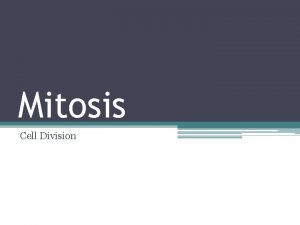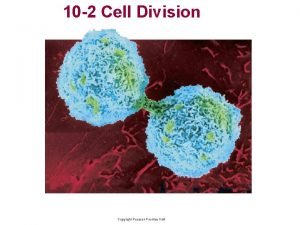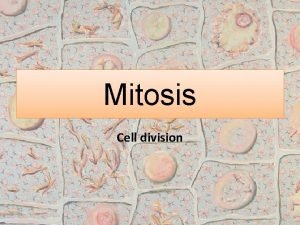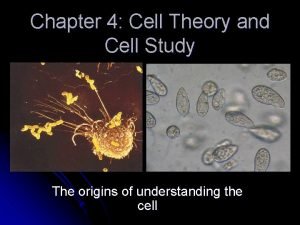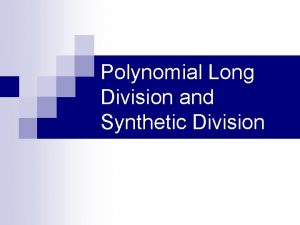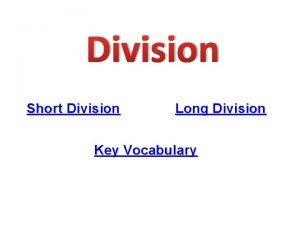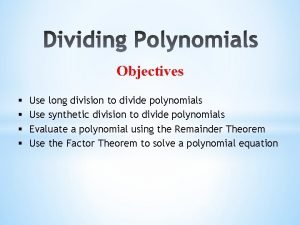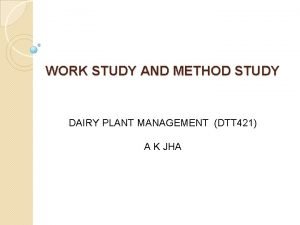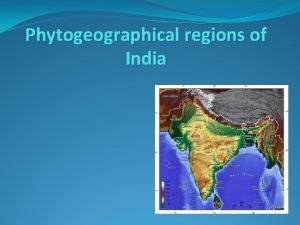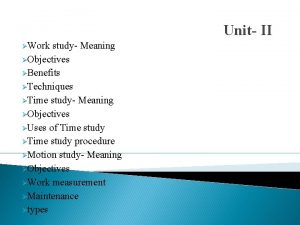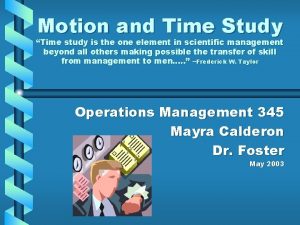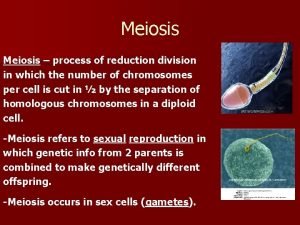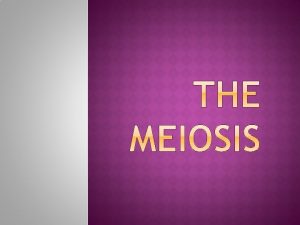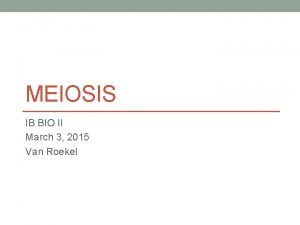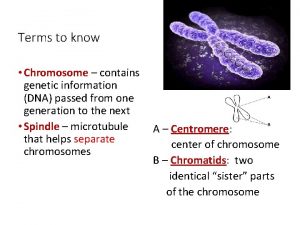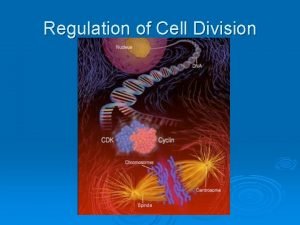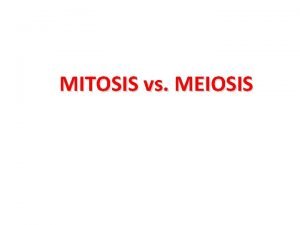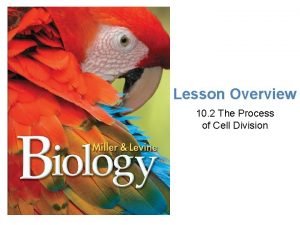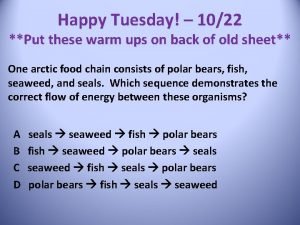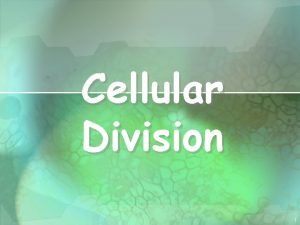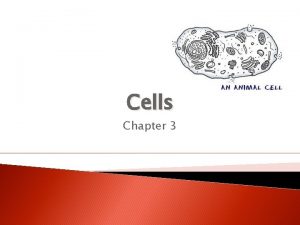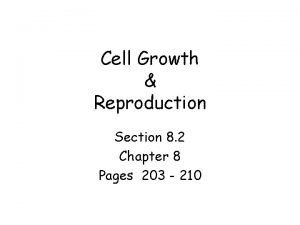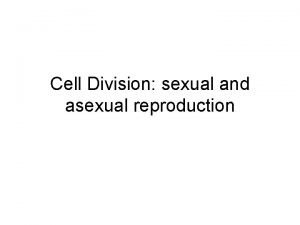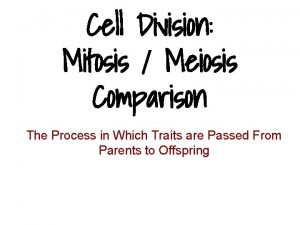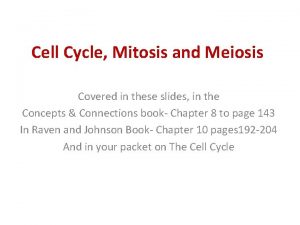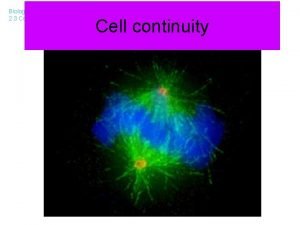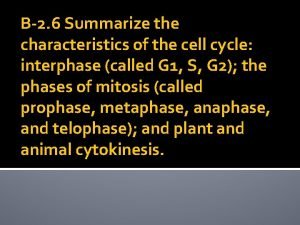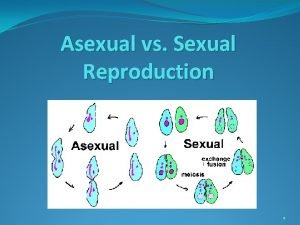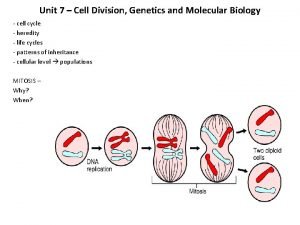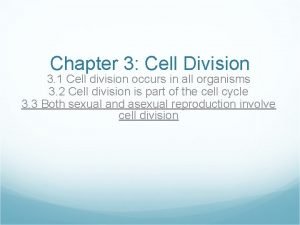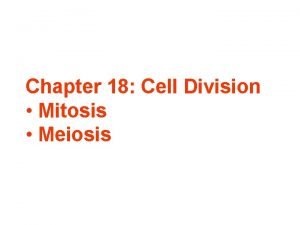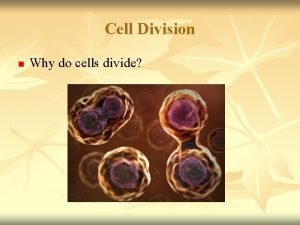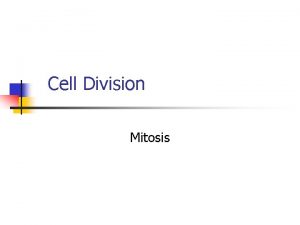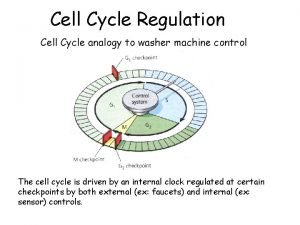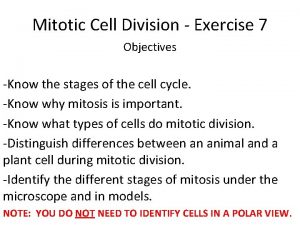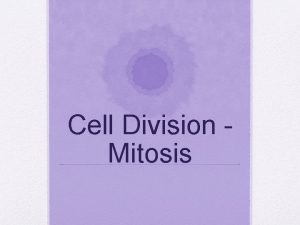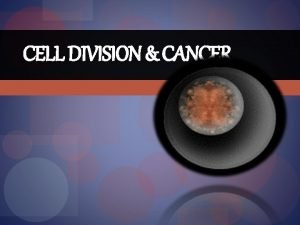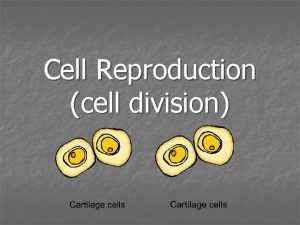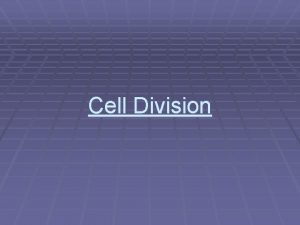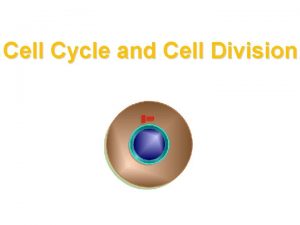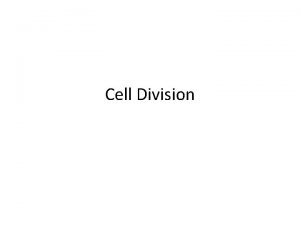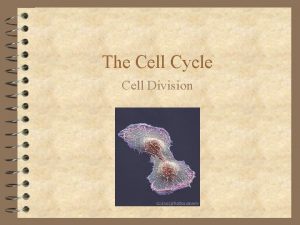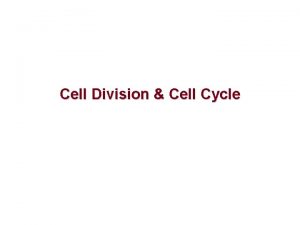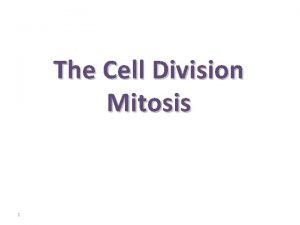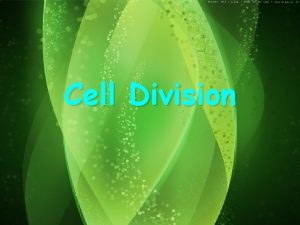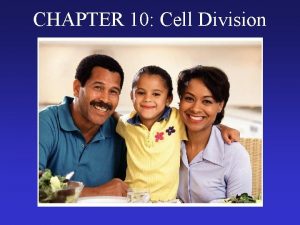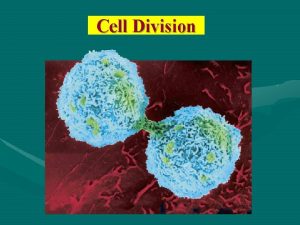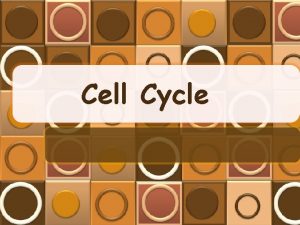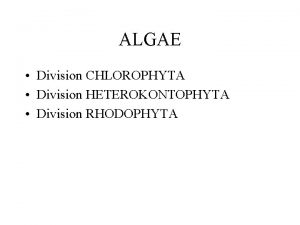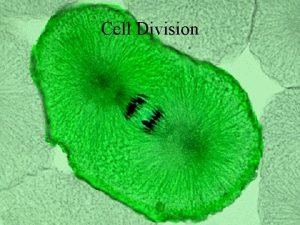Cell Division Why Study Cell Division n n













































- Slides: 45

Cell Division

Why Study Cell Division? n n n Development Limb regeneration Stem cells/stem cell therapy Virology Cancer

Cancer n n n Loss of cell division control leads to unlimited division --- cancerous tumors Oncogenes are proteins that increase the chances of a normal cell becoming a cancer cell Many viral proteins are oncogenes and links between virus infection and cancer have been found

Cancer http: //www. nature. com/nrm/journal/v 9/n 8/box/nrm 2457_BX 1. html

Cell Division n n All cells arise from previously existing cells. New cells are produced for growth or to replace damaged or old cells. Cell division differs between prokaryotes and eukaryotes (binary fission vs. mitosis). Cell division differs in asexual and sexual replication (mitosis vs meiosis).

Genetic Fidelity DNA contains all the information about cell function so each new cell must receive a complete, accurate copy of DNA during cell division. This ensures two identical daughter cells are produced.

Prokaryotic DNA In prokaryotes, a large circular chromosome is bound to the plasma membrane. Smaller plasmid DNA may also be present.

Chromosomes n n Eukaryotic cells contain large amounts of genetic material. n The human cell contains more than 3 meters of DNA!!! This DNA is packaged into structures called chromosomes located in the cell nucleus. n Most eukaryotes contain between 10 and 50 chromosomes. n Humans have 23 pairs (46) chromosomes.

Chromosome Structure DNA is wrapped around proteins called histones. http: //cyberbridge. mcb. harvard. edu/dna_2. html http: //www. mun. ca/biology/desmid/brian/BIOL 2060 -18/CB 18. html

Chromosome Structure n In nondividing cells, chromosomes are more loosely packed and called chromatin. n In dividing cells, chromosomes condense into tightly packaged chromatids.

Chromatids After DNA replication, the pair of sister chromatids are joined at the centromere. http: //www. uic. edu/classes/bios 100/lectures/mitosis. htm http: //www. macroevolution. net/sister-chromatids. html

Karyotype n n n http: //scigjt 13. wordpress. com/2011/03/02/karyotype-of-alzheimers-disease/ Human chromosomes are paired and arranged by size in karyotypes. The first 22 pairs are autosomes. The final chromosome pair is the X/X or X/Y sex chromosomes.

Cell Reproduction n Asexual reproduction creates 2 diploid daughter cells that are identical to the parent cell. n n n Binary fission (prokaryotes); Mitosis (eukaryotes) Sexual reproduction creates daughter cells that are not genetically identical to the parent cell. n Meiosis

Prokaryotic Cell Reproduction Binary Fission

Binary Fission n http: //academic. pgcc. edu/~kroberts/Lecture/Chapter%206/fission. html n Prokaryotes divide by binary fission. Circular DNA chromosome (and plasmids) replicates. Cell wall forms creating two new, smaller cells. Animation

Eukaryotic Cell Cycle n Two Stages of Eukaryotic Cell Cycle n Interphase G 1 – Primary growth phase n S phase – DNA synthesis n G 2 – Secondary growth phase n n Mitosis and Cytokinesis

The Cell Cycle http: //www. bristol. k 12. ct. us/page. cfm? p=7094

The Cell Cycle

Interphase: The G 1 Stage n n n 1 st stage of growth for a new cell after division Cells mature (make more cytoplasm and organelles). Cells will carry out normal metabolic and biological functions.

Interphase: The S Phase n S for DNA Synthesis n DNA is replicated to create 2 complete copies of original chromosomes

Interphase: The G 2 Stage n n 2 nd stage of growth following DNA replication Cell creates all organelles and proteins that will be needed for cell division n Example - centrioles

Interphase: Summary 1. 2. 3. Newly formed cells grow in size and make organelles/proteins needed to perform function (G 1). Chromosomes replicate making 2 complete copies (S). Cells make organelles and proteins needed for mitosis (G 2).

Mitosis n n n Division of nucleus Occurs in eukaryotes only Consists of 4 steps: n n n Prophase Metaphase Anaphase Telophase Does not occur in some cell types (nerve cells) http: //botit. botany. wisc. edu/Resources/Botany/Mitosis/Allium/Complete%20 Mitosis. jpg. html

Mitosis – Early Prophase n n Chromatin condenses to form visible chromosomes Mitotic spindle forms from fibers in cytoskeleton or centrioles nucleolus cell wall chromatin nuclear envelope http: //mrteacherdude. com/biology 2/lab_stuff/mitosis_plant_pro. htm http: //www. bristol. k 12. ct. us/page. cfm? p=7094

Mitosis – Late Prophase n n Nuclear membrane and nucleolus are broken down. Chromatin continues to condense. Kinetochores attach to centromeres. Spindle forms at pole of cell. http: //mrteacherdude. com/biology 2/lab_stuff/mitosis_plant_pro. htm http: //www. bristol. k 12. ct. us/page. cfm? p=7094

Kinetochore and Spindle Fibers n n n The mitotic spindle forms from microtubules in plants and centrioles in animals. Polar fibers extend from one pole of the cell to the other. Short asters radiate from spindle. http: //en. wikipedia. org/wiki/Spindle_apparatus

Kinetochore and Spindle Fibers http: //en. wikipedia. org/wiki/Spindle_apparatus Kinetochore fibers extend from the pole to the centromere of the chromosome.

asters pole chromosomes

Mitosis - Metaphase n Chromosomes attached to kinetochores move to the center of the cell. n Lined up at equator pole http: //www. cbv. ns. ca/bec/science/cell/page 17. html http: //www. bristol. k 12. ct. us/page. cfm? p=7094

Mitosis - Anaphase n n Kinetochore fibers pull sister chromatids apart. Very rapid. http: //micro. magnet. fsu. edu/micro/gallery/mitosis/earlyanaphase. html http: //www. bristol. k 12. ct. us/page. cfm? p=7094

Mitosis - Telophase n n n Sister chromatids migrate to opposite poles. Spindle disassembles. Nuclear envelopes form around each set of sister chromatids. Nucleolus reappears. Chromosomes return to chromatin. Cytokinesis occurs. http: //botit. botany. wisc. edu/Resources/Botany/Mitosis/Allium/telophase%20 cytokinesis. jpg. html http: //www. bristol. k 12. ct. us/page. cfm? p=7094

Mitosis - Cytokinesis n n n Division of cytoplasm between daughter cells In plants a cell plate forms at the equator to divide cells. In animals a cleavage furrow divides cells.

Mitosis - Cytokinesis Cleavage Furrow http: //www. uic. edu/classes/bios 100/lectures/mitosis. htm http: //kr 021. k 12. sd. us/mitosis_practice_test. htm Cell Plate http: //www. vcbio. science. ru. nl/en/virtuallessons/mitostage /

Completion of Mitosis n n After mitosis you have 2 daughter cells that are identical to parent cell in chromosome number and DNA sequence*. Daughter cells are smaller than mature cell and enter G 1 phase (interphase) to grow and function. http: //faculty. clintoncc. suny. edu/faculty/michael. gregory/files/bio%20101%20 lectures/mitosis. htm

Mitosis Animation Plant Cell Mitosis

Mitosis Review – Be able to sketch!

Mitosis Review – Be able to sketch!

Mitosis Review – Be able to label stages and structures!

Mitosis Quiz 1. The 2 chromatid arms are held together in the center by a _______. A. centrosome B. centriole C. centromere D. histone

Mitosis Quiz 2. A cell with only one of each kind of chromosome is said to be 1 n or ______. A. diploid B. cancer C. haploid D. mitotic

Mitosis Quiz 3. Which of the following shows the correct order for the phases of the cell cycle? A. G 1 – G 2 – S – M B. S – G 1 – M – G 2 C. G 1 – S – G 2 – M D. G 1 – M – G 2 - S

Mitosis Quiz 4. The diagram shown is a picture of a person’s chromosomes called a _______. A. karyotype B. genome C. chromatid D. centromere 5. The person shown is _____ A. Male B. Female

Mitosis Quiz 6. Cells spend most of their time in this stage of the life cycle. A. Interphase B. Mitosis C. Telophase D. Anaphase

Mitosis Quiz 7. The place where the cell membrane pinches in to make 2 new daughter cells is called the _______. A. cleavage furrow B. cell plate C. pole D. kinetochore

Mitosis Quiz Which of the pictures shows: 8. Metaphase? 9. Telophase? 10. Prophase? 11. Anaphase A. C. B. D.
 Hey hey bye bye
Hey hey bye bye Interphase of cell cycle
Interphase of cell cycle Section 10-2 cell division
Section 10-2 cell division Cell cycle and cell division
Cell cycle and cell division Phases of cell cycle
Phases of cell cycle Chapter 4 cell theory and cell study
Chapter 4 cell theory and cell study Don't ask why why why
Don't ask why why why Long division and short division
Long division and short division What is synthetic division
What is synthetic division Long division terminology
Long division terminology Synthetic division steps
Synthetic division steps Case series
Case series Retrospective cohort study vs prospective cohort study
Retrospective cohort study vs prospective cohort study Critical examination in method study
Critical examination in method study Study less study smart
Study less study smart Phytogeography region of india
Phytogeography region of india Distinguish between time study and motion study
Distinguish between time study and motion study Distinguish between time study and motion study
Distinguish between time study and motion study Why is meiosis referred to as reductional division
Why is meiosis referred to as reductional division Why is meiosis referred to as reductional division
Why is meiosis referred to as reductional division Why is meiosis referred to as reductional division
Why is meiosis referred to as reductional division Process of reduction division
Process of reduction division Why is meiosis referred to as reductional division
Why is meiosis referred to as reductional division S phase of cell cycle
S phase of cell cycle Frequency of cell division
Frequency of cell division Concept map meiosis
Concept map meiosis Telophase
Telophase Cell division acronym
Cell division acronym What is early prophase
What is early prophase Chapter 3 cells
Chapter 3 cells Chapter 8 cell growth and division section 8-2 answer key
Chapter 8 cell growth and division section 8-2 answer key Asexual reproduction cell division
Asexual reproduction cell division Mitosis meiosis
Mitosis meiosis Cleavage furrow in cell division
Cleavage furrow in cell division Cleavage furrow in cell division
Cleavage furrow in cell division Mitosis
Mitosis Cell cycle labeling answer key
Cell cycle labeling answer key Venn diagram of sexual and asexual reproduction
Venn diagram of sexual and asexual reproduction Unit 7 cell division and heredity
Unit 7 cell division and heredity Cell division mitosis and meiosis
Cell division mitosis and meiosis Unicellular cell division
Unicellular cell division Equator in mitosis
Equator in mitosis Cell division
Cell division Cell division vocabulary
Cell division vocabulary Cell division analogy
Cell division analogy Division
Division

